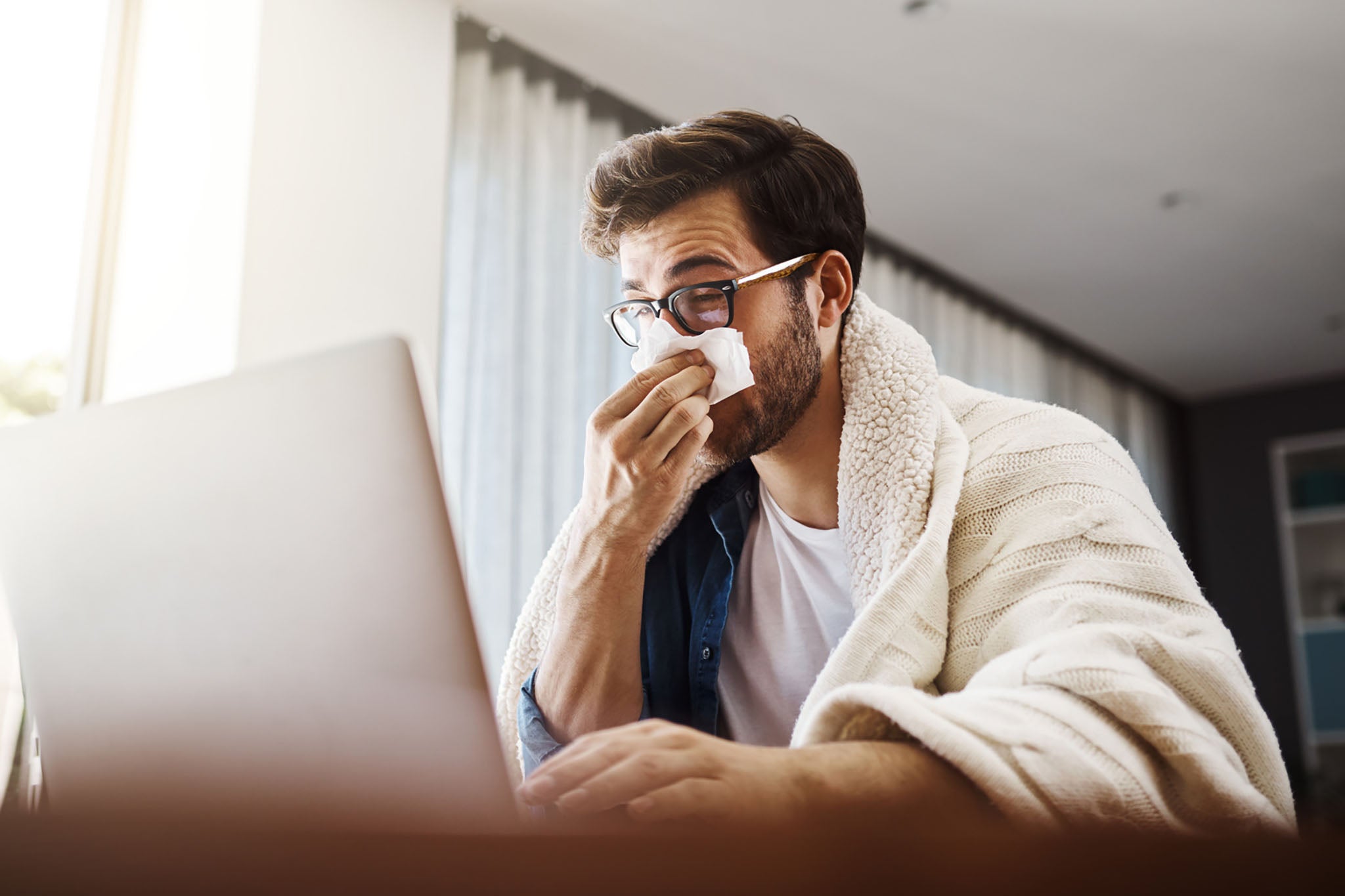Whether it’s your first or fourth cold of the season, many Australians are waking up at the moment with a sniffle, a sore throat or feeling more tired than usual.
Sometimes it’s clear when you need to spend the day in bed: you have a fever, aches and pains, and can’t think clearly.
If it’s the flu or COVID, you’ll want to stay away from others and rest and recover.
But what about if your symptoms are mild? Are you sick enough to take the day off, or should you push through it? And what if you feel pressured to work?
Here’s what to consider.
Are you likely to spread it?
While it may seem like a good idea to continue working, especially when your symptoms are mild, going to work when infectious with a respiratory virus risks infecting your co-workers.
If you are in a client-facing role, such as a teacher or a salesperson, you may also infect others, like students or customers.
The risks may be even greater for those working with vulnerable communities, such as in aged care work, where the consequences can be severe.
From an organisational perspective, you are likely less productive when you are not feeling well.
So, whenever possible, avoid going into work when you’re feeling unwell.
Should I work from home?
The COVID pandemic normalised working from home. Since then, more people work from home when they’re unwell, rather than taking sick leave.
Some employees join Zoom or Teams meetings out of guilt, not wanting to let their co-workers down. Others – and in particular, some men – feel the need to maintain their performance at work, even if it’s at the expense of their health.
A downside of powering through is that workers may prolong their illness by not looking after themselves.
Can you take leave when you need it?
Employees in Australia can take either paid or unpaid time off when they are unwell.
Most full-time employees get ten days of paid sick leave per year, while part-time employees get the equivalent pro rata.
Employers can ask for reasonable evidence from employees to show they are unwell, such as asking for a medical certificate from a pharmacy or GP, or a statutory declaration. The type of evidence required may differ from organisation to organisation, with some awards and enterprise agreements specifying the type of evidence needed.
While taking a sick day helps many workers recuperate, a significant proportion of workers engaged in non-standard work arrangements do not receive these benefits. There are, for example, 2.6 million casual employees who don’t have access to paid sick leave.

Similarly, most self-employed people, such as tradies and gig workers, do not have any paid leave entitlements. Although these workers can still take unpaid leave, they are sacrificing income when they call in sick.
Research from the Australian Council of Trade Unions has found that more than half of insecure workers don’t take time off when injured or sick.
So a significant proportion of workers in Australia simply cannot afford to call in sick.
Why pushing through isn’t the answer
“Presenteeism” is the phenomenon of people reporting for work even when they are unwell or not fully functioning, affecting their health and productivity.
While exact figures are hard to determine, since most organisations don’t systematically track it, estimates suggest 30%–90% of employees work while sick at least once a year.
People work while sick for different reasons. Some choose to because they love their job or enjoy the social side of work – this is called voluntary presenteeism.
But many don’t have a real choice, facing financial pressure or job insecurity. That’s involuntary presenteeism, and it’s a much bigger problem.
Research has found industry norms may be shaping the prevalence of “involuntary presenteeism”, with workers in the health and education sectors more likely to feel obligated to work when sick due to “at-work” caring responsibilities.
What can organisations do about it?
Leaders set the tone, especially around health and well-being. When they role-model healthy behaviour and support time off, it gives others permission to do the same.
Supportive leaders can help reduce presenteeism, while pressure from demanding leaders can make it worse.
Your co-workers matter too. When teams step up and share the load, it creates a culture where people feel safe to take leave. A supportive environment makes wellbeing a shared responsibility.
But for some workers, leave isn’t an option. Fixing this requires policy change across industries and society more broadly, not just inside the workplace.
Alex Veen is a Senior Lecturer and University of Sydney Business School Emerging Scholar Research Fellow.
Hannah Kunst is a Lecturer in Leadership at the University of Sydney.
Nate Zettna is a Lecturer in Leadership at the University of Sydney.
This article is republished from The Conversation under a Creative Commons license. Read the original article.

